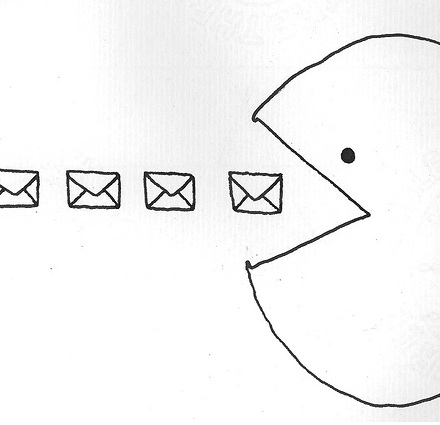Email marketers have to accept a certain amount of expected email list depreciation every year, but when that list dwindles down more and more due to unsubscribes, it's time to press 'pause.'

Unsubscribes are, in very technical terms, a huge bummer. Sure, a certain amount of self-scrubbing is good for every email list , but you can't help but wonder if there's something you could have done differently to save some of those subscribers.
Well, it turns out there might be some things you can do to reduce the amount of email unsubscribes you experience. If your email marketing strategy doesn't include some of these measures, consider implementing them now and, tracking the effect they have on your unsubscribe rates. We bet including just a few (or even better, all) of these into your email marketing strategy will result in a significantly diminished unsubscribe rate.
9 Ways to Reduce Email Unsubscribes
1.) Better segment your list. Email segmentation is important because it allows you to deliver only the most relevant, customized content to your subscribers. The more specific your segments get, the better able you are to deliver content that speaks directly to their interests, making you a fixture in their inbox they don't want to get rid of.
( Tip: If you've implemented a lead nurturing program, you can continue to collect information about your subscribers based on their on- and off-site behaviors that will allow you to learn more and more about them, and then deliver more personalized emails that align with their stage in the buying cycle.)
2.) Map your content. Now that you know so much about your subscribers from your lead nurturing, you can manually map your content assets to their behaviors. One way to do so is to create a Google Doc or use an Excel spreadsheet that allows you to organize which content will be sent to which segments of your audience, and at what point. Mapping relevant content to your list segments gives your subscribers the proper email content for their stage in the buying cycle, and ensures everything you send them is as relevant as possible, decreasing your instances of unsubscribes due to irrelevant content. For example, an email subscriber that is in the evaluation stage of the buying cycle would benefit from a case study focused on their industry, or a use case of your product that fixes a problem on which they've fixated. Plus, content mapping lets you identify and fill in holes in your content strategy as you notice shortages in assets mapped to certain segments or stages in the buying cycle.
3.) Offer customized email frequency. Just as you should let your subscribers select the types of emails they receive, you should also let them adjust the frequency with which you can communicate. Let email recipients tell you the right frequency for them -- whether it's multiple times daily or just once a month -- so you don't end up bombarding their inbox or leaving it too scarce for their tastes. This option should be included not only in their editable email preferences at the bottom of every email, but also on the page to which your unsubscribe link navigates as a final effort to save your subscriber. You can send these emails to your inactive subscribers, too, and ask them to identify their ideal sending frequency and email type to reengage them and prevent what is often a looming unsubscribe.
4.) Perform email frequency testing. Not all of your subscribers will tell you how often they like to be emailed by your company, so be proactive and perform email frequency tests to determine the optimal frequency with which to send email communications. If you haven't performed an email sending frequency test, reference this guide to get your first experiment up and running. And remember, each segment of your list will have a different frequency that's right for them.
5.) Offer a different communication method. If an email recipient is ready to unsubscribe, they might love your content but suffer from inbox overload. Give them other options for communication, like SMS, RSS, your social media networks , your company blog, and all the other places you let your audience know about important company developments.
6.) Have a regular email sending schedule. To manage expectations in the long term, you need to set expectations up front. RueLaLa does an excellent job with this; they send their email communications every day at 11:00 EST, on the dot. When your subscribers understand when they will be getting emails from you, there's less of a chance your email will surprise them when they're busy, cranky, overwhelmed, or another negative emotion that drives hasty and vengeful unsubscribes. Set their expectations from the first time they opt in to your emails about when they'll receive emails from you, and do your best to live up to that promise.
7.) Leverage exclusivity. Speaking of RueLaLa, it's not just their impeccable timing that keeps me from unsubscribing from their emails. It's the fact that their offers are exclusive, and if I unsubscribe, I cut off access to offers I may want to take advantage of (not to mention feeling a little less VIP). I haven't purchased from them in a few months, but I won't unsubscribe because I will probably redeem one of their exclusive offers in the future. In the meantime, I welcome their marketing in my inbox.
8.) Make sure your emails don't load slowly. Checking how your emails load in different email clients and on mobile devices should be a regular part of your email marketing routine , because it plays a huge role in the success of your email campaigns. Don't include images that are too big to load quickly, design elements that don't render well on mobile devices, and any other elements that make reading your email a bad experience.
9.) Take the feedback. Despite all of this hard work, some people will still unsubscribe from your emails. Take that opportunity to solicit feedback from them, and then...listen to it, and act on it. You may notice trends on your own, like people unsubscribing more frequently from offer emails versus blog emails. Maybe your blog content is great, but your promotions aren't enticing enough to get people to act. Soliciting feedback from unsubscribes won't help you save that email recipient, but it will help you prevent future subscribers from leaving.
Are your email unsubscribe rates concerning? What have you done to help decrease the rate of email unsubscribes?
Image credit: jayfreshuk


![How to Create an Email Newsletter [+Expert Tips & Checklist]](https://blog.hubspot.com/hubfs/Untitled design (31)-2.jpg)
.jpg)






![When Do People Unsubscribe From Email Marketing Campaigns? [Infographic]](https://blog.hubspot.com/hubfs/00-Blog_Thinkstock_Images/Email_Unsubscribes.jpg)